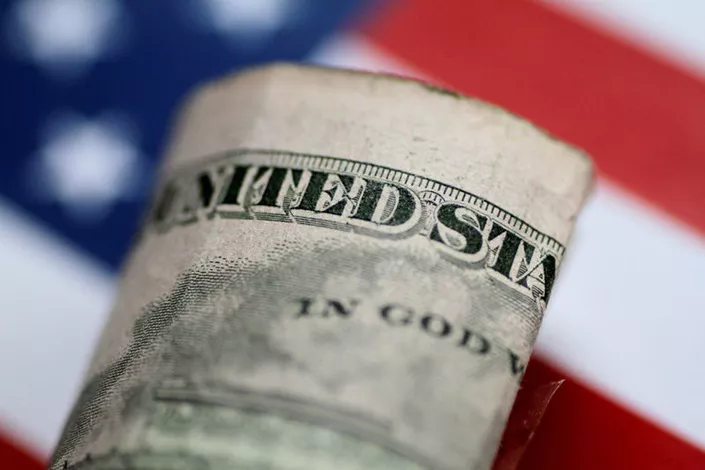The U.S. dollar slightly dropped on Friday, yet remained on track for weekly gains, boosted by easing trade tensions and signals from the Federal Reserve indicating no rush to cut interest rates.
At 04:30 ET (08:30 GMT), the Dollar Index, which tracks the dollar against six other currencies, dipped by 0.2% to 100.275. Despite this, it is poised for a weekly rise of around 0.4%.
Federal Reserve’s Cautious Outlook Supports Dollar
On Wednesday, the U.S. Federal Reserve kept its key interest rate steady at 4.25%-4.50%, as expected. However, Fed Chair Jerome Powell highlighted the uncertainty surrounding the economy, noting it is unclear whether growth will continue or be hindered by inflationary pressures.
This uncertainty has led to a decrease in market expectations for a rate cut, with the likelihood of a June rate reduction dropping from 55% to around 17% in just one week.
The dollar also gained support from a new trade agreement between the U.S. and the U.K., and ahead of trade talks between U.S. and Chinese officials set to begin over the weekend. Analysts at ING noted that while the agreement is not a major game-changer, markets welcomed the deal as a positive development for trade relations.
Euro Struggles as Dollar Strengthens
The euro edged up by 0.2% to 1.1251 against the dollar, recovering from a one-month low reached earlier. However, with positive sentiment towards the dollar rising due to reduced trade tensions, the euro could face challenges in the near term. Analysts suggested that if EUR/USD breaks below 1.1200, it could signal a significant shift in market sentiment, with 1.100 seen as the next key support level.
Olli Rehn, the head of Finland’s central bank, warned that while efforts to bring inflation in the euro zone back to the 2% target are on track, the economic environment is deteriorating, largely due to the risks posed by the ongoing global trade war.
Sterling Moves Higher, but Gains Limited
The British pound rose slightly by 0.1% to 1.3259, recovering from a three-week low following the trade agreement announcement. However, analysts noted that the deal’s impact on the U.K. economy is limited, and much of the deal had already been priced into the market.
The agreement includes modest increases in agricultural access and the reduction of some U.S. duties on British car exports, but the 10% baseline tariff remains unchanged. The Bank of England also lowered its interest rate by 0.25% to 4.25% on Thursday, as expected.
Yen Gains Slightly, but Challenges Remain
In Asia, the Japanese yen gained slightly, with USD/JPY dropping 0.4% to 145.24. Despite this, the yen remains near a one-month high, following weaker-than-expected wage income data, which contradicted the Bank of Japan’s view of rising wages and persistent inflation.
Meanwhile, the Chinese yuan strengthened slightly, with USD/CNY rising 0.2% to 7.2464. Despite better-than-expected export growth from China, the yuan received little support, with trade tensions and steep U.S. tariffs still weighing on the currency.
Looking Ahead: Trade Talks and Data Set to Shape Market Trends
The mixed performance of global currencies comes ahead of critical trade talks between U.S. and Chinese officials in Geneva over the weekend. Investors will be watching closely for any developments that could further impact global trade dynamics and influence currency movements in the coming weeks.
Related topics:


